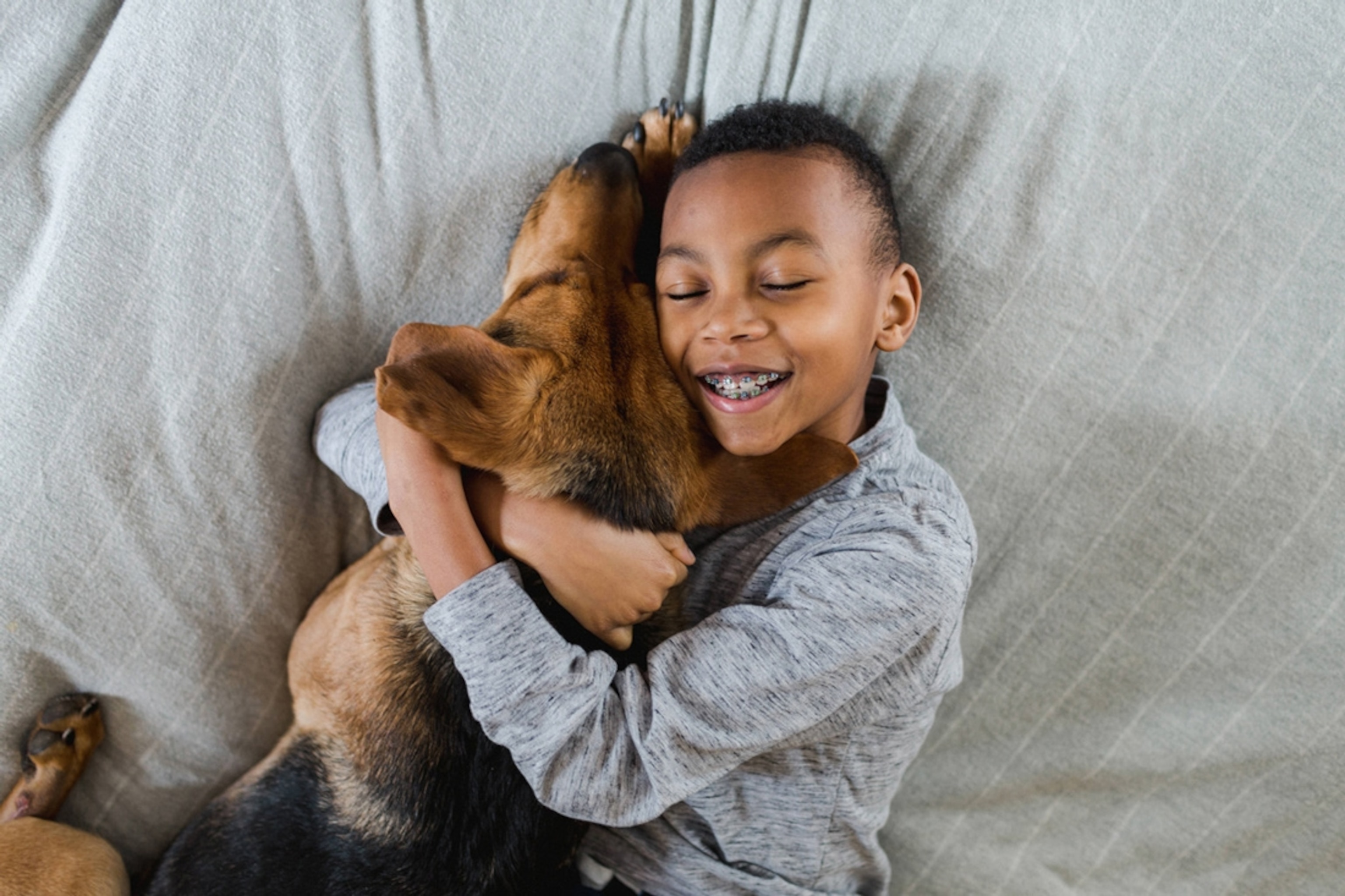
Getting through the pandemic puppy blues
Your new dog may not be behaving. Help it—and your kids—get through the transition
Before Jessica and Simon MacLean adopted their rescue dog, Kristy, they made a list of traits they hoped to find in a dog, like “friendly” and “likes to play.” The foster family for the year-old Lab mix gave the thumbs-up, and Kristy arrived at their Brooklyn home in mid-September.
But during most of that first week, Kristy was hardly the “best friend” that their 10-year-old daughter, Bea, had been begging for. “She retreated to her crate at every opportunity. She didn’t even wag her tail,” Jessica MacLean says. “To be honest, we started to wonder if we’d made the wrong decision.”
Turns out, the MacLean’s experience is hardly unusual. Just like people, animals need time to adopt to new situations. “A dog’s behaviors are highly influenced by the environment and the humans it’s with,” says Karen London, an animal behaviorist in Flagstaff, Arizona. “Being pulled out of one home and placed in another changes everything for the dog—the place, the smells, where to sleep, pee, eat … all the rules.”
Since the pandemic began, many animal shelters have reported an increase in pet adoptions as more cooped-up families have been spurred into four-legged action. That’s likely to increase during the holiday season, another time when pet adoptions can experience a bump. And though a pet can teach children important life skills like patience and responsibility, not understanding how a dog’s behavior can change during a transition can derail any child’s desire to become a pet parent.
“You don’t yet know how an animal will react to anything: hugs, loud noises, kids running around, the smells of dinner cooking … the list is endless,” says London, author of Treat Everyone Like a Dog. “That can lead to disappointed owners, returned dogs, the stress of uncertainty, and a delay in building a strong bond.”
Here’s how to prepare your kids for the ups and downs that may lie ahead.
The Rule of Three
Some animal behavior experts call a new dog’s constant changes in behavior the “Rule of Three”—which predicts that a dog’s behavior will unfold during the following three intervals: three days, three weeks, and three months.
“As a dog becomes settled in a new place, its emotions change, and emotions can affect behavior,” London says.
Though it’s not a scientifically proven behavior, London says it’s the result of the accumulated observations of dog experts and owners over many years. Here’s what your family might see.
Three days: A recent study found that dogs in shelters have higher cortisol levels (a stress hormone) than they do outside of the shelter. And all that new activity and space can be overwhelming for many shelter dogs, especially those that have been in a facility for weeks. So the first few days after a dog comes home is a bit of a detox period. “There’s a good chance that they may be inhibited,” says Sue Sternberg, a Utah-based canine behavior expert who specializes in rescue dogs.
In dog terms, this can mean that the pooch will be shy, quiet, sleepy, or keep to itself. “Think of this as a dog that’s doing its best not to ‘ruffle any feathers,’” says Kelly Ballantyne, a veterinary behaviorist and founder of Insight Animal Services in Chicago.
Three weeks: As the dog settles in, it will begin to see your home as its home. That’s a great sign, Sternberg says—but you might notice some more troubling behaviors as well.
For instance, the dog might start “resource guarding,” like growling if approached while eating or not wanting to share toys with other dogs. Sternberg says this often means that the dog is now feeling a sense of ownership.
“They’re claiming property and people as their own,” she says. “They’re finding them valuable enough to protect.”
This is also a time in which behaviors that might have been hidden because the dog was too nervous or fearful begin to emerge. It might pull or even bite at the leash. Quiet dogs may suddenly start barking; those that didn’t want to play at first might now start pouncing.
Sternberg recommends enlisting the help of dog trainers or other resources such as online videos and books. “The sooner you start, the better,” she says. “Laying this foundation early is one of the best things you can do for your dog and your whole family.”
Three months: By this point, most dogs know that they’re “home.” But London reminds new owners that—just like children—pooches are always changing. Especially if you adopted an adolescent dog (six to seven months old) as opposed to a puppy, large changes in maturity can still occur every few months until the dog reaches adulthood.
Helping kids (and pups!) adjust
Bringing home a new dog? Exciting! Having a dog you can’t really play with? Womp, womp.
To teach kids the patience they need to help their new dog navigate the Rule of Three, Ballantyne advises talking to them about how big of a change this is for a rescue dog, and why it needs an adjustment period. Sternberg suggests telling kids that the dog is a bit like “a foreign exchange student who doesn’t speak our language or know our ways and culture.” Or similarly, a new kid at school.
“They need time and space and patience,” London says. “Everything might feel overwhelming, so kids don’t want to add to that by coming on too strong.”
Have kids start with small gestures to the dog. Gentle touches while supervised, helping refill their water bowl, or picking out a new bed are ways children can develop empathy and respect for their new companion—without overwhelming it. They can also help create a predictable routine for the dog, such as planning walks or mealtime.
“When it comes to dogs, school is always in session,” London says. “Everything you do is actually teaching them as they’re making sense of the world.”
To keep kids safe, parents also should teach children about canine body language to understand when a dog is afraid or nervous. “It can be anything from the ears back, stiff body, or growling, to less expected things like lip licking,” Ballantyne says. (Get kid-friendly activities to help your family learn more about your pup.)
When the MacLeans stumbled across the Rule of Three after talking to families in similar situations, they felt relieved knowing that Kristy probably just needed time, that nothing was “wrong” with her. After about five weeks of patience from her new owners, a tail-wagging Kristy started welcoming Bea home from school.
“It didn’t happen all at once,” Jessica MacLean says. “But eventually, she developed that 'dog smile,' and she seems authentically happy.”




